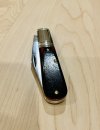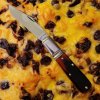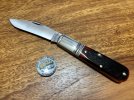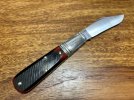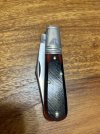Some terminology...
If you look at a domed pin, the top is domed, and there's a distinct flat disc on the underside of the dome. If there's space between the scale and the underside of the dome, that's a proud pin. One poster described it as being able to hang the knife on a fingernail by the pin. This is not normal in any knife regardless of scale material.
Sometimes a spun (domed) pin is set so that a sharp edge is raised on the edge of the dome. That's an upset pin, and not normal.
A domed pin with the underside set flush to the scale surface will often protrude above the scale surface. There's no edge to catch a nail on, the pin surface is perfectly smooth. This is normal.

